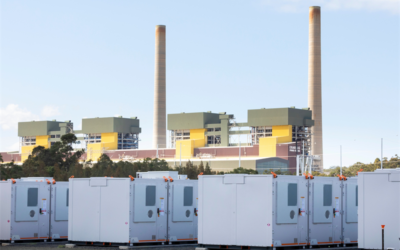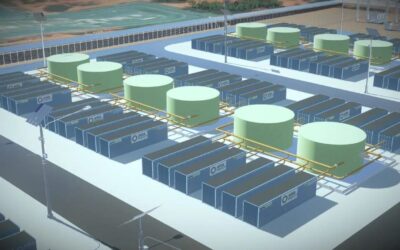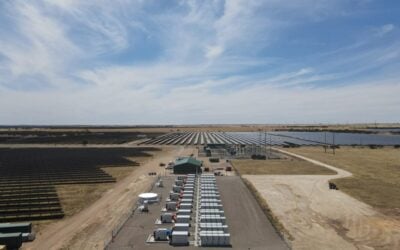
Australia’s Cheaper Home Batteries Program processes approximately 8,000 applications per week, according to Carl Binning, executive general manager, scheme operations division, Clean Energy Regulator, who spoke at All-Energy Australia 2025 last week.
The federal programme builds on successful state-level initiatives, including Victoria’s home battery programme that delivered 20,000 installations before the federal scheme took over. The national programme has already reached 2GWh of storage capacity, with the government claiming the initiative has increased Australia’s home battery capacity by more than 50% in less than four months of operation.
The rapid adoption has created capacity constraints across the industry, with wait times extending to at least three months and continuing to grow.
“The system and the capacity of our industry are just about full. So, we’re starting to see an increased backlog in order,” Binning explained during the panel discussion.
Try Premium for just $1
- Full premium access for the first month at only $1
- Converts to an annual rate after 30 days unless cancelled
- Cancel anytime during the trial period
Premium Benefits
- Expert industry analysis and interviews
- Digital access to PV Tech Power journal
- Exclusive event discounts
Or get the full Premium subscription right away
Or continue reading this article for free
The programme adds approximately 100 new installations each week, building on Australia’s existing solar infrastructure that includes 9,000 solar installers nationwide, with 4,500 qualified for battery installations.
The initiative’s rapid deployment demonstrates the effectiveness of leveraging existing infrastructure. Binning noted that the team had “a pretty short sprint of three months” to establish the programme.
The Clean Energy Council’s product listing and solar accreditation systems, combined with Australia’s installer registry and certificate generation processes, provided a familiar framework that enabled quick implementation.
System sizes grow as market shifts from early adopters to mainstream
The average system size has grown to just over 20kWh, with differentiation emerging between small businesses that install larger batteries and households, which typically select systems in the 15kWh to 20kWh range.
While early signs indicate system prices are beginning to fall, installation costs may be trending upward due to supply bottlenecks. The industry continues to expand its installer base, with approximately 100 new installers becoming accredited each week; however, this growth rate remains steady due to limitations in training network capacity.
Ryan Wavish, general manager of innovation at Engie Retail, noted that, from a retail perspective, the market shift is from early adopters to mainstream consumers.
“We’ve been working with customers interested in home batteries since about 2017-18 in the VPP trials in South Australia,” Wavish said. “It’s finally happening. Second is it’s happening really quickly.”
Wavish explained that the company has developed partnerships with companies like Intelli Hub to offer subscription models for solar and battery systems, allowing customers to achieve savings from day one without significant capital deployment.
The success of the Cheaper Home Batteries Program has created market-shifting dynamics, with retailers observing changes in electricity pricing patterns.
“We’re already seeing the belly of the duck as more of that solar is being stored through the middle of the day. So, we’re seeing shifts in some of those prices,” Wavish said.
This phenomenon has prompted entire retail businesses, not just innovation teams, to examine how distributed storage will impact energy markets and other grid assets.
Virtual power plant participation faces commercial challenges
Another key message from the panel discussion centred around participation in virtual power plants (VPPs), which presents both opportunities and challenges for the industry. While the program includes VPP components, consumer trust remains a critical factor.
“The energy programme wasn’t the most trusted industry, and that’s developed over a long period of time,” Wavish acknowledged. The complexity of integrating various battery types through different APIs and managing interconnectivity costs while providing customer incentives creates commercial challenges for retailers and aggregators.
The commercial viability of VPP offerings is constrained by multiple factors. “The value isn’t that big, right? It’s not a huge amount of value,” Wavish explained.
“And all of the interconnectivity costs complexity of integrating with that battery, managing it, the software, API, connections, all those things cost money, and then obviously the customer needs an incentive to participate, and the retail and aggregator needs to have a commercial product as well, so there’s not much left over.”
Despite these challenges, retailers are working to develop more accessible VPP products. Wavish’s company has shifted toward offering “fixed, guaranteed benefits on a monthly basis to really guarantee extra benefits for customers and their batteries,” rather than complex variable arrangements.
The expectation is that as the market moves beyond early adopters into mainstream adoption, increased investment will drive product innovation and simpler approaches.
Tesla highlights Australia’s outsized global role in residential storage
Josef Tadich, regional director of energy APAC at Tesla, provided global context, noting that Australia represents 10% of Tesla’s worldwide Powerwall installations.
The company installed its first battery in Australia exactly 10 years before the conference, reaching 100,000 installations by the start of 2025, before the Cheaper Home Batteries Program was launched.
With Tesla operating “roughly a bit over a million Powerwalls operating globally,” Australia’s contribution demonstrates the country’s outsized role in residential energy storage adoption.
Kirsty Gowans, head of electricity division at the Department of Climate Change, Energy, Environment and Water (DCCEEW), emphasised the programme’s dual objectives of addressing cost-of-living pressures while delivering system-wide benefits.
The department focuses on the “energy wallet” concept rather than electricity prices alone, recognising that electrification will increase electricity usage while potentially reducing consumption of other fuels.
“We’re trying to help people understand that journey of electrification,” Gowans explained.
The programme generates network benefits by avoiding peak grid demand on distribution networks and enabling load shifting to avoid higher-priced electricity during peak periods.
“We see the benefit as being avoided network build, avoided use of higher cost electricity at the peak,” Gowans explained. These benefits extend beyond individual battery owners to all system users through delayed investments in the distribution network.
Government focuses on system-wide benefits beyond individual savings
Government policy design prioritised consumer choice and market alignment over mandated participation.
“Had we said everybody must participate, I think we might be seeing a very different outcome in this program, because this program is actually following what consumers want,” Gowans noted.
The approach of creating a demand-driven programme rather than predicting specific uptake levels proved effective, given the difficulty of forecasting exponential technology adoption.
State-level policy variations are creating additional market dynamics. New South Wales has implemented enhanced incentives for virtual power plant (VPP) participation through its Peak Demand Reduction Scheme, offering increased rebates to customers who join VPPs.
While Wavish described the system as “a bit clunky” compared to point-of-sale subsidies, requiring customers to submit photos and prove VPP participation, “the reward is good, and customers are going through it.”
This has resulted in “relatively higher levels of participation” in New South Wales compared to other jurisdictions.
Looking ahead, industry participants anticipate continued demand growth and ongoing innovation in VPP products as the market transitions beyond its early adopters.
Binning drew parallels to the digital music industry transformation, comparing the current phase to iTunes’ early success with album downloads before streaming services like Spotify became dominant. “I think the market’s going to move very quickly, and in ways that are a little bit difficult to predict,” he said.
The programme’s success highlights Australia’s position as a leader in distributed energy resources, with households accounting for approximately 40% of the country’s solar capacity.
This distributed resource base, combined with an empowered and motivated consumer base of 4.5 million households, positions Australia for continued transformation in the energy storage sector.
As Binning concluded, “we’ve got four and a half million households that are highly empowered and highly motivated, and they’re starting to switch on.”





